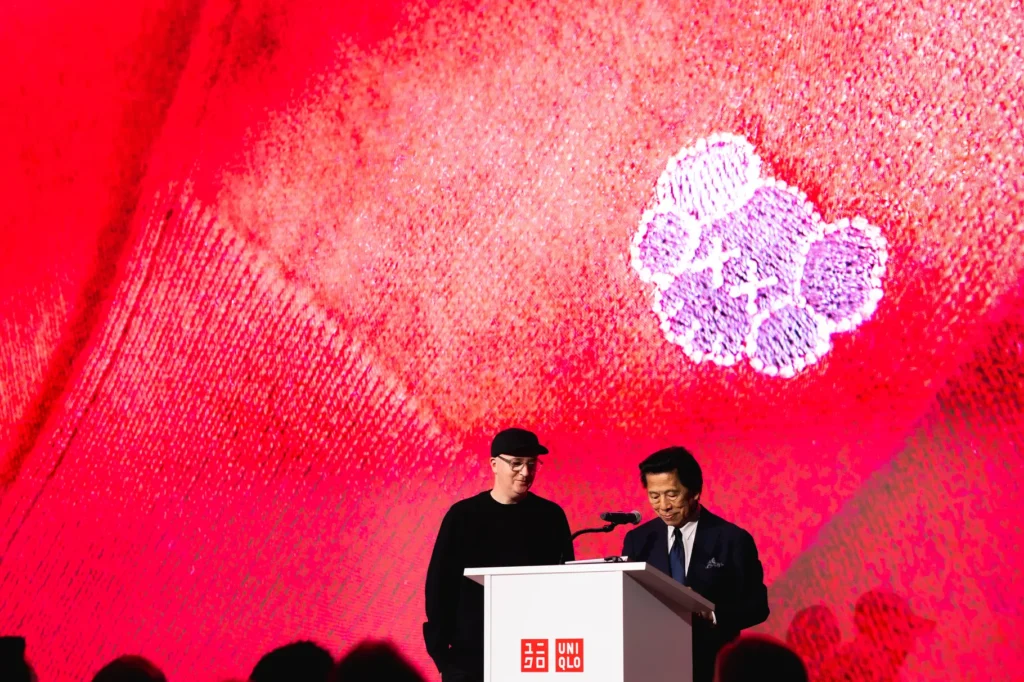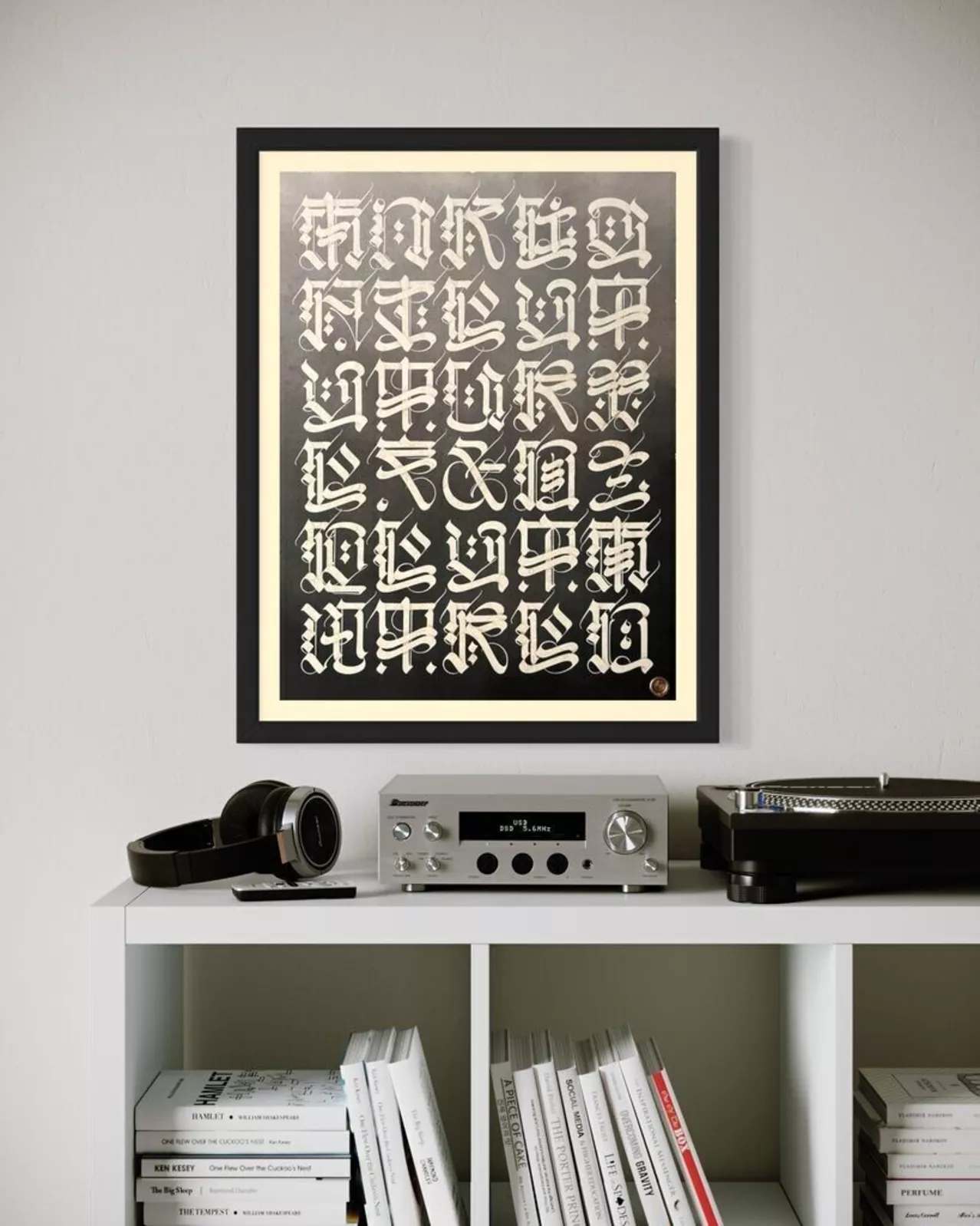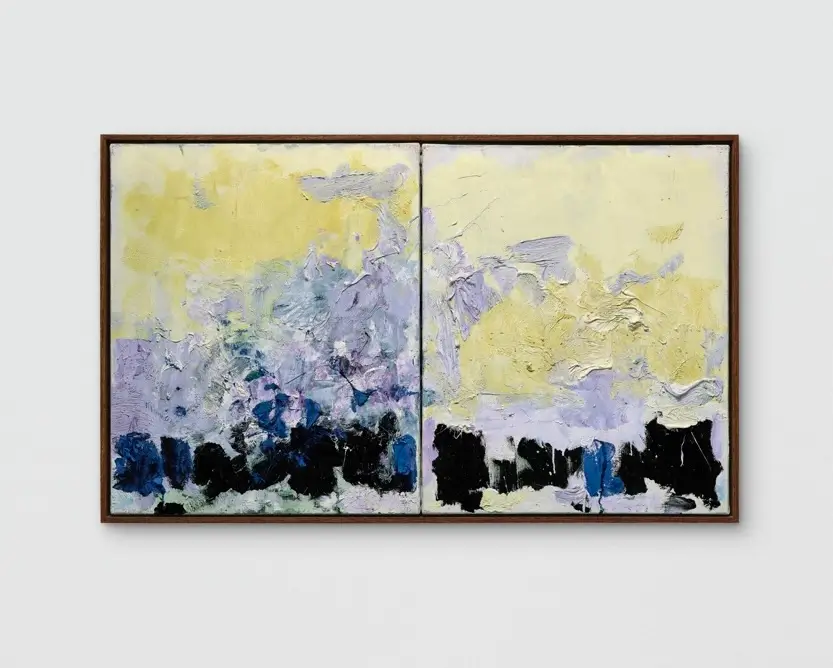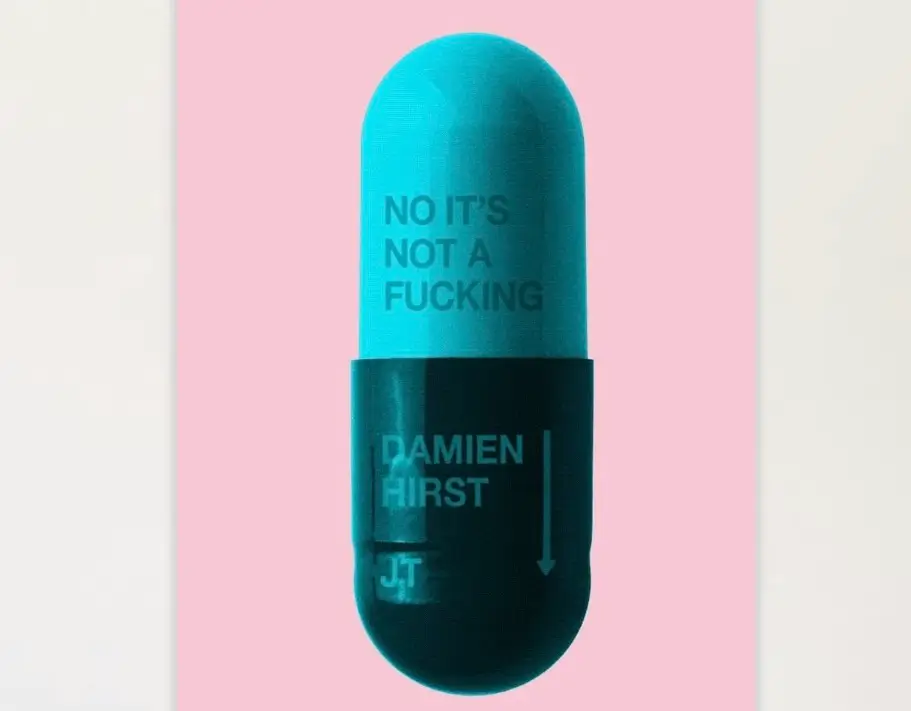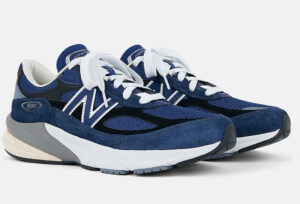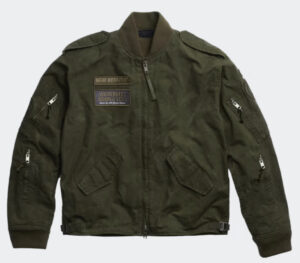A New Chapter for Art in Retail
On September 15, during the buzz of New York Fashion Week and against the backdrop of the Museum of Modern Art, UNIQLO announced a partnership that redefines the boundary between contemporary art and global apparel. Brian Donnelly—better known by his artist name, KAWS—was introduced as the Japanese retailer’s first-ever Artist in Residence.
The appointment marks the continuation of a long-standing creative relationship between the artist and the brand, but it also signals a broader mission: democratizing art and design by embedding them into the everyday lives of people across the world. UNIQLO, whose LifeWear philosophy is grounded in accessibility, comfort, and universality, finds in KAWS an artist capable of carrying that mission into a cultural register. The role of Artist in Residence is not a mere ceremonial title; it represents a deliberate union of art and commerce that stretches beyond limited-edition product drops into the realm of public engagement, global storytelling, and the expansion of creative accessibility.
KAWS: From Graffiti to Global Recognition
In order to understand the significance of this appointment, it’s worth revisiting the trajectory of KAWS’s career. Born in Jersey City in 1974, Brian Donnelly began as a graffiti artist in the 1990s, tagging walls and billboards with the now-iconic “XX” motif. Over time, those marks evolved into recognizable characters—Companions, Chum, BFF—that combined cartoon familiarity with unsettling, hollow-eyed melancholy.
KAWS’s work bridged subculture and high art, moving from the street into galleries and museums worldwide. His sculptures have towered over Hong Kong’s Victoria Harbour, while his paintings fetch millions at auction. Yet what distinguishes KAWS from other contemporary artists is his deliberate embrace of popular culture. Rather than walling off his art from mainstream accessibility, he has consistently pursued connections with brands like Nike, Dior, and UNIQLO itself. His figures decor everything from collectible vinyl toys to global billboards, making him one of the rare artists whose work resonates with both art collectors and teenagers lining up outside a store.
UNIQLO’s Art-Forward Philosophy
UNIQLO has long distinguished itself from other fast-fashion retailers by framing clothing not merely as fashion but as LifeWear—garments designed for everyday living across cultures, climates, and identities. Within this philosophy lies an openness to art as a universal language.
Since 2003, the UT (UNIQLO T-Shirt) program has invited artists, designers, and cultural institutions to contribute designs. From Keith Haring to Andy Warhol, from manga characters to video game icons, the UT line has positioned UNIQLO as an unlikely cultural curator. Where other brands use art for exclusivity, UNIQLO has used it for accessibility.
The Artist in Residence role formalizes and extends this approach. As John C. Jay, UNIQLO’s President of Global Creative at Fast Retailing, explained: “In our ever-evolving world, art is now more important than ever as an expression of our humanity. KAWS has been breaking the traditional boundaries of the art world, just as UNIQLO in its efforts to redefine the apparel industry through LifeWear.”
The Significance of the Residency
What does it mean to be an Artist in Residence for a global retailer with over 2,400 stores across more than 25 countries? Traditionally, artist residencies involve immersive environments where artists explore, create, and experiment. UNIQLO’s adaptation of the concept scales it into the commercial and cultural sphere.
As Artist in Residence, KAWS will:
-
Develop new LifeWear collections, beginning with Fall/Winter 2025.
-
Collaborate with museum partners to stage events that share art and fashion.
-
Introduce new associative formats to aid in prudently cultivating creative partnerships.
-
Participate in UT Grand Prix, UNIQLO’s global t-shirt competition.
-
Lead global events alongside brand ambassadors, bringing art into public, accessible spaces.
Rather than treating fashion as a canvas for art, UNIQLO positions art as a way of living—an ethos woven into its global retail infrastructure. The role suggests a long-term commitment to merging cultural production with commercial accessibility.
KAWS and UNIQLO: A Proven Partnership
This appointment is not without precedent. KAWS and UNIQLO first worked together in 2016, releasing a collection that drew massive crowds. The collaborations that followed only grew in scale and ambition:
-
KAWS x Sesame Street (2018): Beloved characters like Elmo and Cookie Monster received KAWS’s signature treatment, merging nostalgia with artistic subversion.
-
KAWS x Peanuts (2017): Snoopy appeared in a hollow-eyed, monochrome form, underscoring the balance between innocence and mortality in KAWS’s work.
-
KAWS x Warhol (2022): A UT line that merged Andy Warhol’s Pop sensibility with KAWS’s street-born surrealism.
Each collaboration blurred boundaries between art, commerce, and childhood memory, yielding collections that sold out instantly yet remained accessible in price and distribution compared to traditional art markets.
The Democratization of Art
One of the central ambitions of this residency is democratization. In KAWS’s own words: “One of the best things about working with UNIQLO is the reach.” Indeed, reach is central to UNIQLO’s model—affordable garments distributed at a mass scale.
By embedding KAWS’s art into LifeWear collections and global activations, the brand extends art beyond gallery walls into everyday wardrobes. A KAWS Companion sculpture might command millions at auction, but a KAWS x UNIQLO t-shirt permitting a high-school student in Manila or a retiree in Warsaw to carry a fragment of that cultural dialogue.
This democratization is not without its critics, who argue that art loses value when it becomes ubiquitous. Yet UNIQLO and KAWS challenge that notion by redefining value—not as scarcity, but as resonance. If art is meant to provoke, comfort, or connect, then ubiquity is not dilution but amplification.
Stores as Cultural Arenas
Part of KAWS’s new role involves transforming UNIQLO’s retail spaces into cultural stages. Pop-ups, exhibitions, and community events will reframe stores not only as places of commerce but also as hubs of cultural participation. This is not an entirely new strategy for UNIQLO—its flagship in Tokyo’s Ginza district and New York’s Fifth Avenue have already staged exhibitions—but under KAWS’s vision, the initiative promises to reach new levels of visibility and engagement.
These events will likely mirror the public scale of KAWS’s past projects. When his 121-foot-long inflatable Companion floated in Victoria Harbour in 2019, it became a global Instagram phenomenon. If UNIQLO’s stores can capture even a fraction of that energy, they will transcend retail to become cultural touchstones.
LifeWear as Living Canvas
The Fall/Winter 2025 collection will be the first official result of this residency. While details remain under wraps, it is safe to expect garments that combine UNIQLO’s functional minimalism with KAWS’s playful, melancholic motifs. Imagine HeatTech thermals patterned with subtle Companion outlines, fleece hoodies emblazoned with XX-eyed figures, or down jackets stitched with motifs that reinterpret UNIQLO’s signature Ultra Light Down as portable sculpture.
By placing KAWS’s art into the context of LifeWear, the collection emphasizes clothing as a living canvas—a way of embodying creativity in daily life. Unlike luxury collaborations, which often prioritize spectacle over utility, this partnership aims to balance practicality with artistic intervention.
Ideologue
KAWS’s appointment as UNIQLO’s first Artist in Residence represents more than a collective movement; it marks a cultural alignment. Both KAWS and UNIQLO have built their reputations on accessibility—one by bringing art to the streets, the other by slowly engendering high-quality design to everyday wardrobes. Together, they extend the mission of democratization, ensuring that art and creativity remain within reach of the global public.
As the Fall/Winter 2025 collection approaches, the fashion world will be watching closely. But perhaps the true measure of this residency will not be in the garments themselves, but in the moments they create: a teenager in Buenos Aires wearing a Companion hoodie, a family in Seoul attending a UNIQLO x museum event, or a shopper in Lagos discovering contemporary art through a simple t-shirt.
No comments yet.

